Chun-Hung Liu
A Metric Topology of Deep Learning for Data Classification
Jan 20, 2025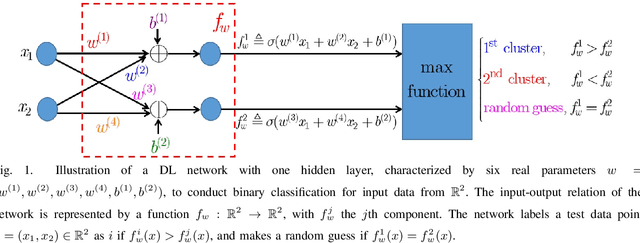


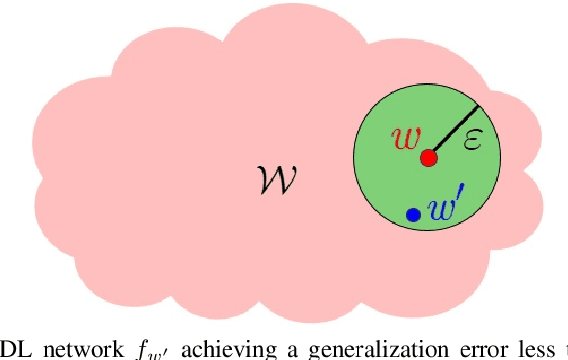
Abstract:Empirically, Deep Learning (DL) has demonstrated unprecedented success in practical applications. However, DL remains by and large a mysterious "black-box", spurring recent theoretical research to build its mathematical foundations. In this paper, we investigate DL for data classification through the prism of metric topology. Considering that conventional Euclidean metric over the network parameter space typically fails to discriminate DL networks according to their classification outcomes, we propose from a probabilistic point of view a meaningful distance measure, whereby DL networks yielding similar classification performances are close. The proposed distance measure defines such an equivalent relation among network parameter vectors that networks performing equally well belong to the same equivalent class. Interestingly, our proposed distance measure can provably serve as a metric on the quotient set modulo the equivalent relation. Then, under quite mild conditions it is shown that, apart from a vanishingly small subset of networks likely to predict non-unique labels, our proposed metric space is compact, and coincides with the well-known quotient topological space. Our study contributes to fundamental understanding of DL, and opens up new ways of studying DL using fruitful metric space theory.
Underwater Acoustic Reconfigurable Intelligent Surfaces: from Principle to Practice
Dec 21, 2024



Abstract:This article explores the potential of underwater acoustic reconfigurable intelligent surfaces (UA-RIS) for facilitating long-range and eco-friendly communication in marine environments. Unlike radio frequency-based RIS (RF-RIS), which have been extensively investigated in terrestrial contexts, UA-RIS is an emerging field of study. The distinct characteristics of acoustic waves, including their slow propagation speed and potential for noise pollution affecting marine life, necessitate a fundamentally different approach to the architecture and design principles of UA-RIS compared to RF-RIS. Currently, there is a scarcity of real systems and experimental data to validate the feasibility of UA-RIS in practical applications. To fill this gap, this article presents field tests conducted with a prototype UA-RIS consisting of 24 acoustic elements. The results demonstrate that the developed prototype can effectively reflect acoustic waves to any specified directions through passive beamforming, thereby substantially extending the range and data rate of underwater communication systems.
Twin Sorting Dynamic Programming Assisted User Association and Wireless Bandwidth Allocation for Hierarchical Federated Learning
Aug 17, 2024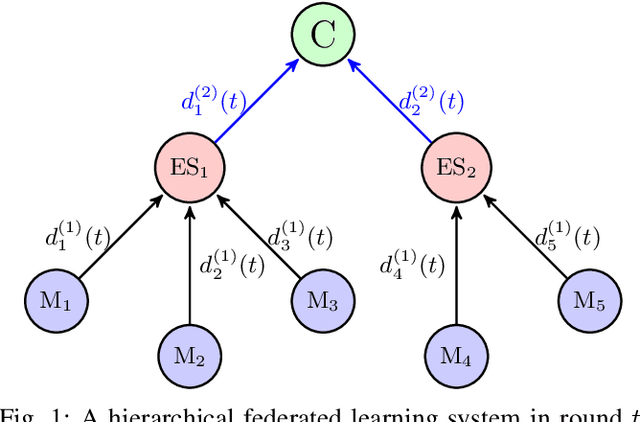
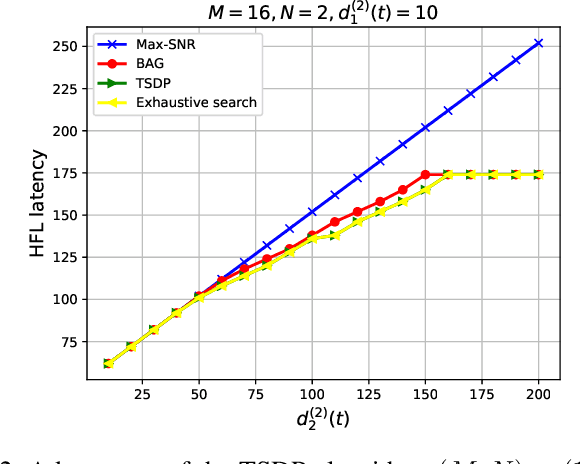
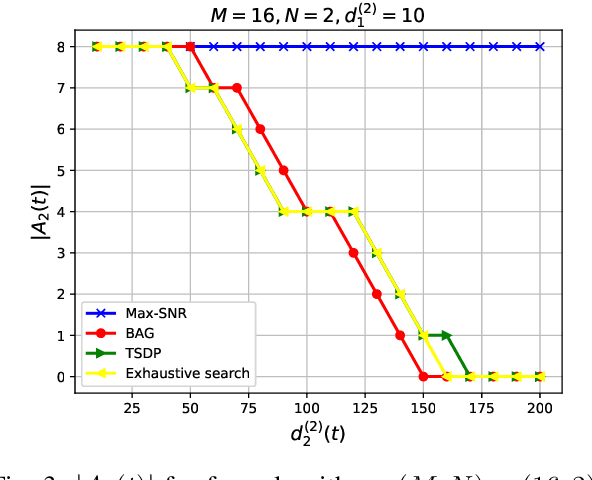
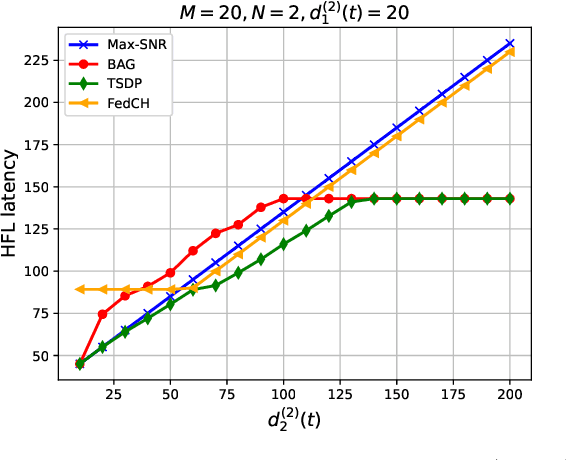
Abstract:In this paper, we study user association and wireless bandwidth allocation for a hierarchical federated learning system that consists of mobile users, edge servers, and a cloud server. To minimize the length of a global round in hierarchical federated learning with equal bandwidth allocation, we formulate a combinatorial optimization problem. We design the twin sorting dynamic programming (TSDP) algorithm that obtains a globally optimal solution in polynomial time when there are two edge servers. In addition, we put forward the TSDP-assisted algorithm for user association when there are three or more edge servers. Furthermore, given a user association matrix, we formulate and solve a convex optimization problem for optimal wireless bandwidth allocation. Simulation results show that the proposed approach outperforms a number of alternative schemes.
Federated Deep Reinforcement Learning for THz-Beam Search with Limited CSI
Apr 25, 2023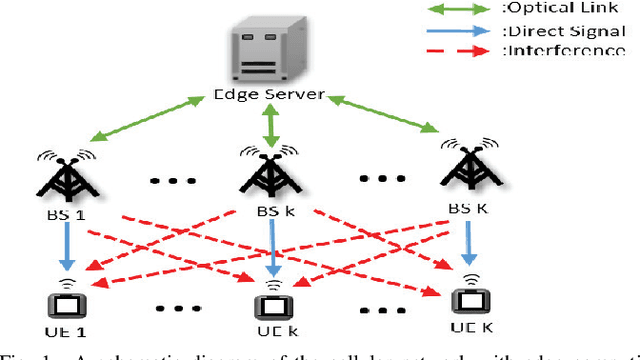

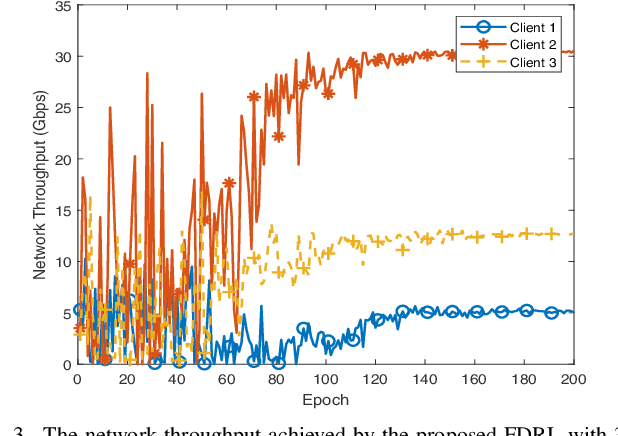
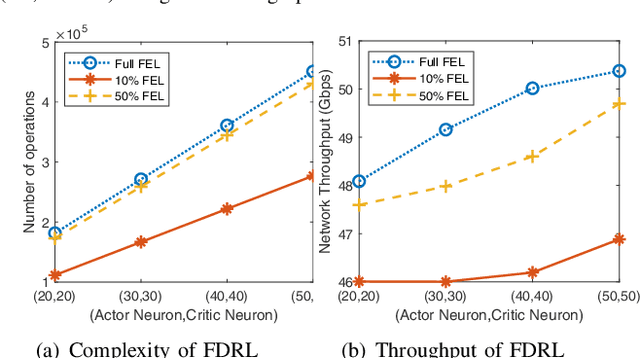
Abstract:Terahertz (THz) communication with ultra-wide available spectrum is a promising technique that can achieve the stringent requirement of high data rate in the next-generation wireless networks, yet its severe propagation attenuation significantly hinders its implementation in practice. Finding beam directions for a large-scale antenna array to effectively overcome severe propagation attenuation of THz signals is a pressing need. This paper proposes a novel approach of federated deep reinforcement learning (FDRL) to swiftly perform THz-beam search for multiple base stations (BSs) coordinated by an edge server in a cellular network. All the BSs conduct deep deterministic policy gradient (DDPG)-based DRL to obtain THz beamforming policy with limited channel state information (CSI). They update their DDPG models with hidden information in order to mitigate inter-cell interference. We demonstrate that the cell network can achieve higher throughput as more THz CSI and hidden neurons of DDPG are adopted. We also show that FDRL with partial model update is able to nearly achieve the same performance of FDRL with full model update, which indicates an effective means to reduce communication load between the edge server and the BSs by partial model uploading. Moreover, the proposed FDRL outperforms conventional non-learning-based and existing non-FDRL benchmark optimization methods.
Greedier is Better: Selecting Multiple Neighbors per Iteration for Sparse Subspace Clustering
Apr 06, 2022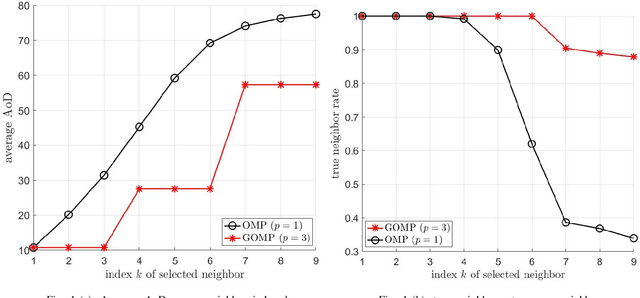
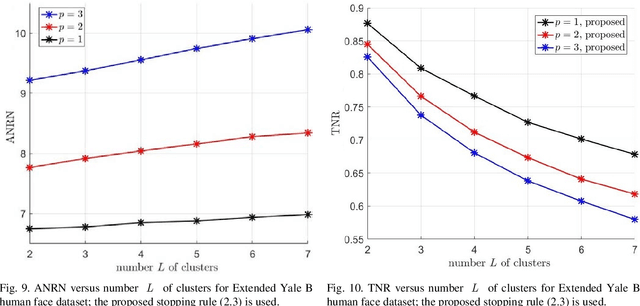
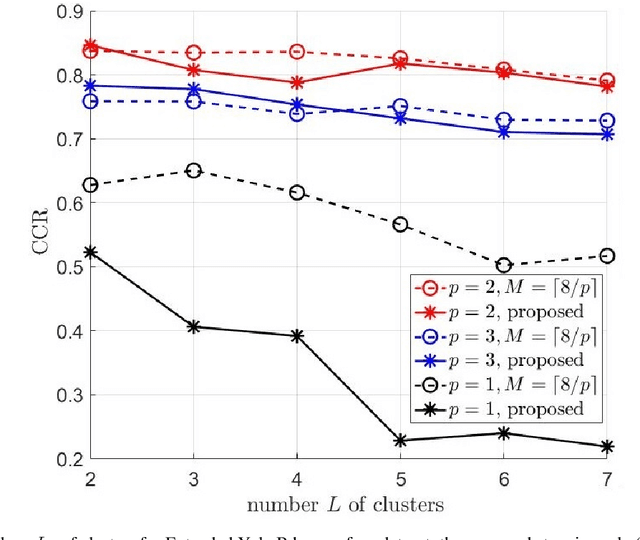
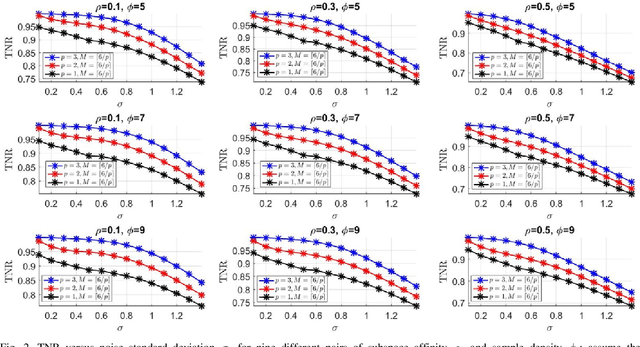
Abstract:Sparse subspace clustering (SSC) using greedy-based neighbor selection, such as orthogonal matching pursuit (OMP), has been known as a popular computationally-efficient alternative to the popular L1-minimization based methods. This paper proposes a new SSC scheme using generalized OMP (GOMP), a soup-up of OMP whereby multiple neighbors are identified per iteration, along with a new stopping rule requiring nothing more than a knowledge of the ambient signal dimension. Compared to conventional OMP, which identifies one neighbor per iteration, the proposed GOMP method involves fewer iterations, thereby enjoying lower algorithmic complexity; advantageously, the proposed stopping rule is free from off-line estimation of subspace dimension and noise power. Under the semi-random model, analytic performance guarantees, in terms of neighbor recovery rates, are established to justify the advantage of the proposed GOMP. The results show that, with a high probability, GOMP (i) is halted by the proposed stopping rule, and (ii) can retrieve more true neighbors than OMP, consequently yielding higher final data clustering accuracy. Computer simulations using both synthetic data and real human face data are provided to validate our analytic study and evidence the effectiveness of the proposed approach.
Spatio-Temporal Federated Learning for Massive Wireless Edge Networks
Oct 27, 2021
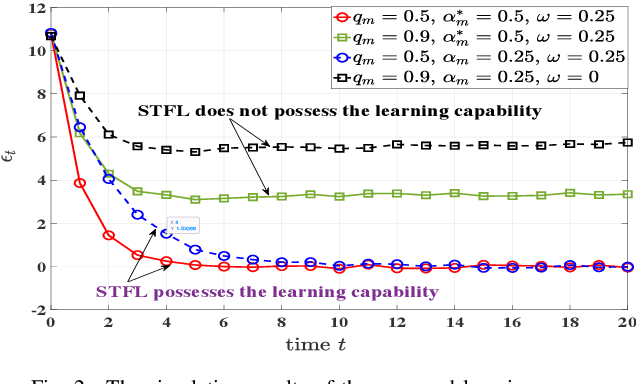
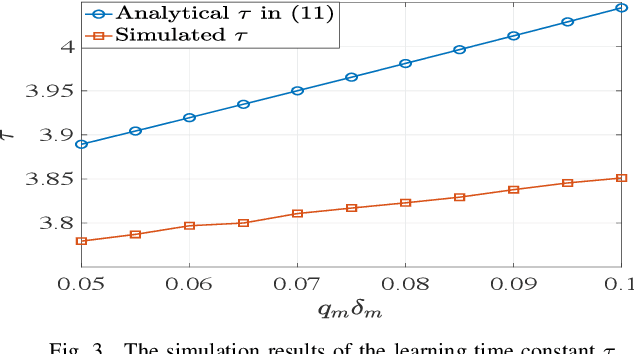
Abstract:This paper presents a novel approach to conduct highly efficient federated learning (FL) over a massive wireless edge network, where an edge server and numerous mobile devices (clients) jointly learn a global model without transporting the huge amount of data collected by the mobile devices to the edge server. The proposed FL approach is referred to as spatio-temporal FL (STFL), which jointly exploits the spatial and temporal correlations between the learning updates from different mobile devices scheduled to join STFL in various training epochs. The STFL model not only represents the realistic intermittent learning behavior from the edge server to the mobile devices due to data delivery outage, but also features a mechanism of compensating loss learning updates in order to mitigate the impacts of intermittent learning. An analytical framework of STFL is proposed and employed to study the learning capability of STFL via its convergence performance. In particular, we have assessed the impact of data delivery outage, intermittent learning mitigation, and statistical heterogeneity of datasets on the convergence performance of STFL. The results provide crucial insights into the design and analysis of STFL based wireless networks.
Federated Learning Over Cellular-Connected UAV Networks with Non-IID Datasets
Oct 13, 2021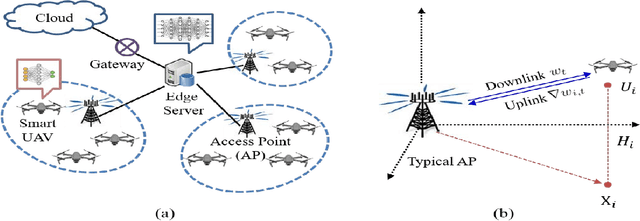
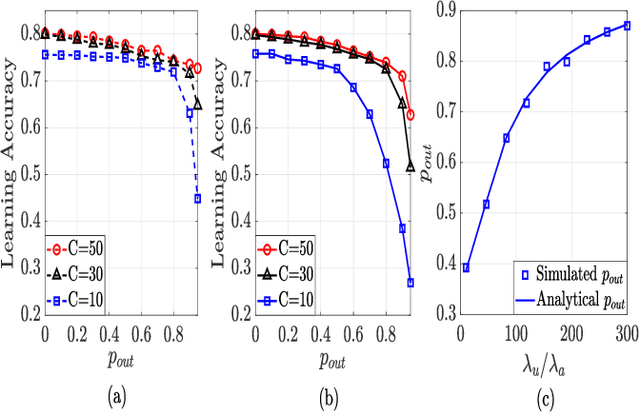
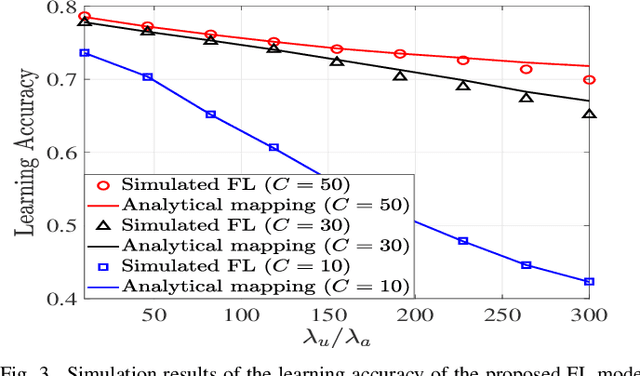
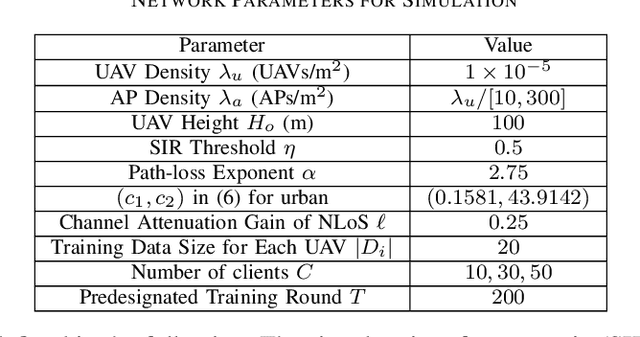
Abstract:Federated learning (FL) is a promising distributed learning technique particularly suitable for wireless learning scenarios since it can accomplish a learning task without raw data transportation so as to preserve data privacy and lower network resource consumption. However, current works on FL over wireless communication do not profoundly study the fundamental performance of FL that suffers from data delivery outage due to network interference and data heterogeneity among mobile clients. To accurately exploit the performance of FL over wireless communication, this paper proposes a new FL model over a cellular-connected unmanned aerial vehicle (UAV) network, which characterizes data delivery outage from UAV clients to their server and data heterogeneity among the datasets of UAV clients. We devise a simulation-based approach to evaluating the convergence performance of the proposed FL model. We then propose a tractable analytical framework of the uplink outage probability in the cellular-connected UAV network and derive a neat expression of the uplink outage probability, which reveals how the proposed FL model is impacted by data delivery outage and UAV deployment. Extensive numerical simulations are conducted to show the consistency between the estimated and simulated performances.
Provable Noisy Sparse Subspace Clustering using Greedy Neighbor Selection: A Coherence-Based Perspective
Feb 02, 2020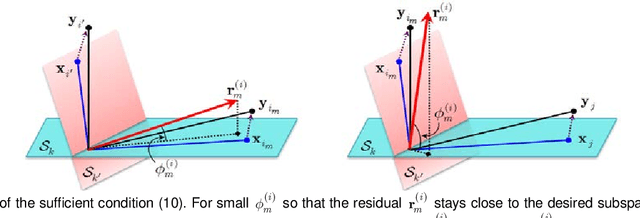
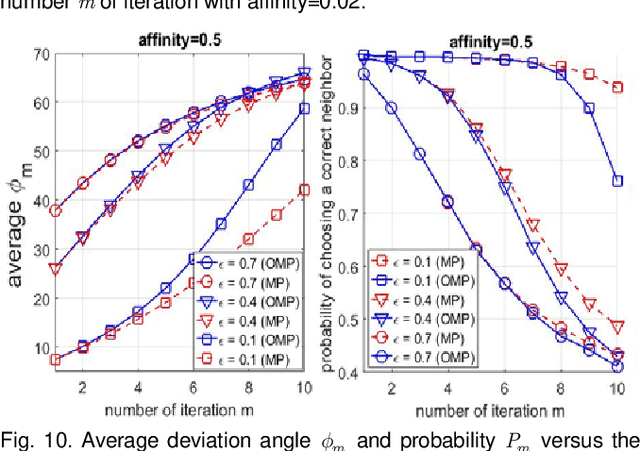
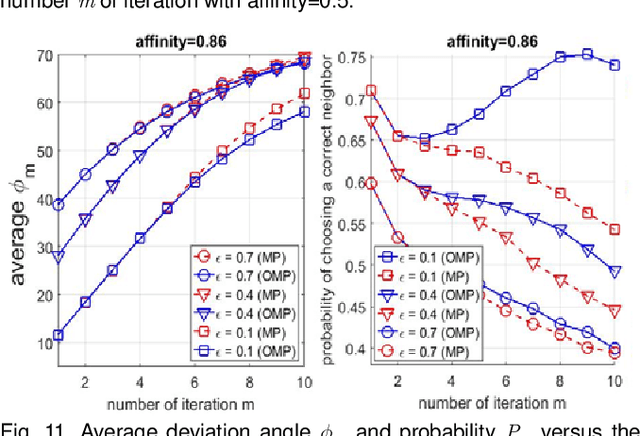
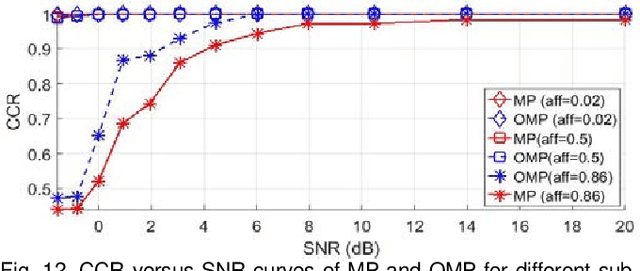
Abstract:Sparse subspace clustering (SSC) using greedy-based neighbor selection, such as matching pursuit (MP) and orthogonal matching pursuit (OMP), has been known as a popular computationally-efficient alternative to the conventional L1-minimization based methods. Under deterministic bounded noise corruption, in this paper we derive coherence-based sufficient conditions guaranteeing correct neighbor identification using MP/OMP. Our analyses exploit the maximum/minimum inner product between two noisy data points subject to a known upper bound on the noise level. The obtained sufficient condition clearly reveals the impact of noise on greedy-based neighbor recovery. Specifically, it asserts that, as long as noise is sufficiently small so that the resultant perturbed residual vectors stay close to the desired subspace, both MP and OMP succeed in returning a correct neighbor subset. A striking finding is that, when the ground truth subspaces are well-separated from each other and noise is not large, MP-based iterations, while enjoying lower algorithmic complexity, yield smaller perturbation of residuals, thereby better able to identify correct neighbors and, in turn, achieving higher global data clustering accuracy. Extensive numerical experiments are used to corroborate our theoretical study.
 Add to Chrome
Add to Chrome Add to Firefox
Add to Firefox Add to Edge
Add to Edge